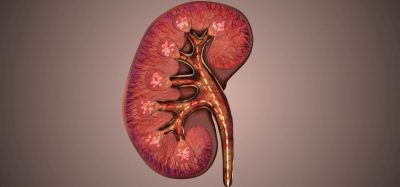EMA issues advice on use of Lagevrio for the treatment of COVID-19
Posted: 24 November 2021 | Anna Begley (European Pharmaceutical Review) | No comments yet
The Europe Medicines Agency (EMA)’s human medicine committee advise (CHMP) that Lagevrio can be used for COVID-19 patients who do not require oxygen and are at increased risk.


The European Medicines Agency (EMA)’s human medicine committee, the Committee for Medicinal Products for Human Use (CHMP), has issued advice on the use of Lagevrio, also known as molnupiravir or MK 4482, for the treatment of COVID-19.
The CHMP advised that the medicine, which is currently not authorised in the EU, can be used to treat adults with COVID-19 who do not require supplemental oxygen and who are at increased risk of developing severe COVID-19. Lagevrio should be administered as soon as possible after diagnosis of COVID-19 and within five days of the start of symptoms. The medicine, which is available as capsules, should be taken twice a day for five days.
EMA issued this advice to support national authorities who may decide on possible early use of the medicine prior to marketing authorisation, such as in emergency use settings, in light of rising rates of infection and deaths due to COVID-19 across the EU.
According to EMA, the advice follows a review of data, including data on the medicine’s quality and results from completed and ongoing studies. Interim results from the main study in non-hospitalised, unvaccinated patients with at least one underlying condition putting them at risk of severe COVID-19 were assessed as part of this advice.
The study found that Lagevrio, when given at a dose of 800mg twice a day, reduced the risk of hospitalisation and death when treatment started within five days of the start of symptoms. About one month after treatment started 7.3 percent of 385 patients who took Lagevrio compared with 14.1 percent of 377 patients who took placebo had been hospitalised or had died; none of the patients in the Lagevrio group died compared with eight patients in the placebo group. The most common side effects reported during treatment and within 14 days after the last dose of Lagevrio were diarrhoea, nausea, dizziness and headache, all of which were either mild or moderate.
However, EMA added that Lagevrio is not recommended during pregnancy and in women who can become pregnant and are not using effective contraception. Women who can become pregnant must use effective contraception during treatment and for four days after the last dose of Lagevrio. Breastfeeding should be interrupted during treatment and for four days after treatment. These recommendations follow laboratory studies in animals that have shown that high doses of Lagevrio can impact the growth and development of the foetus.
Related topics
Clinical Trials, Data Analysis, Drug Safety, Preclinical Research, Regulation & Legislation, Therapeutics, Viruses
Related organisations
Committee for Medicinal Products for Human Use (CHMP), European Medicines Agency (EMA)









